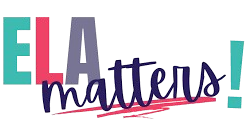Effective stakeholder engagement matters a great deal these days in educational settings. Logic models and other visual planning tools play a significant role in facilitating engagement by providing representations of program goals fairly clearly. Here’s how you can use visual planning to engage stakeholders in school programs:
-
The Power of Visual Thinking
Visual planning tools render complicated objectives and procedures into readily graspable formats within various educational settings. Schools can simplify complex information by deploying diagrams, flowcharts, and planning maps, forging a shared language. This is crucial when dealing with a wide variety of stakeholders, many of whom may not have backgrounds in education or program design.
A recent Harvard Graduate School of Education study noted that visual learning strategies significantly improve study engagement and comprehension, especially among adult learners in many educational settings. Stakeholders stay invested and aligned with program objectives when they clearly perceive how their contributions shape the project landscape.
-
Introducing the Logic Model for School Programs
The logic model is one of the most effective visual tools for planning educational initiatives. It visually outlines relationships between a program’s resources, activities, outputs, and outcomes. If used correctly, it ensures everyone (from school board members to parents) grasps what the program entails and how it gets achieved subsequently.
For example, in a school nutrition program, the logic model might map funding and staffing as inputs and healthy meal planning as the activity, resulting in vastly improved student wellness as the long-term outcome. Stakeholders can visually pinpoint their contributions and see progress measurement by laying it out in a diagrammatic format. This model is helpful when schools apply for grants or work with outside partners. It translates well across various sectors, whether nonprofit initiatives or robust health programs worldwide.
-
Engaging Parents and Guardians
Parents frequently feel disconnected from school activities beyond an occasional PTA meeting or sporadic volunteer opportunities. Visual planning tools offer them a tangible way of participating actively in such endeavors. Schools can foster inclusion and transparency by centering planning sessions around visual models with various stakeholders actively participating.
Programs that successfully engage parents and guardians tend to yield higher student achievement rates and more lasting outcomes overall. Community workshops can be utilized where participants introduce and fill out the logic model collectively. Schools can regularly gain valuable feedback from families by creating shared ownership.
-
Teachers as Co-Creators
Teachers do more than just execute lesson plans. They are seasoned front-line experts wielding considerable influence over students. Programs can become more feasible and intensely tailored around student needs when teachers are involved in collaborative visual planning, shaping their structure effectively.
Teacher involvement in decision-making processes at school significantly boosts the effectiveness of programs, according to a RAND Corporation report. Shared planning tools such as logic models ground discussions in clarity, reducing confusion and bolstering accountability.
-
Students and Peer-Led Planning
Stakeholder engagement doesn’t end with grown-ups; students bring vital perspectives rather keenly from their unique vantage points.
This can be particularly powerful in programs addressing peer issues, such as anti-bullying initiatives or mental health awareness. Visual planning makes it easier for students to contribute meaningfully without needing technical knowledge.
-
The Role of Community Partners
Schools increasingly partner with outside groups like nonprofits and health departments, delivering programs effectively across various platforms. Visual planning lets collaborators grasp their role quickly within a project and thoroughly understand their expectations.
Clarity becomes particularly crucial when stakeholders with varied interests and resources converge on a single endeavor simultaneously. A well-structured logic model clearly delineates project timelines and responsibilities, smoothing coordination efforts and reducing task redundancy.
Endnote
Our planning and communication methods must evolve rapidly alongside increasingly complex school programs. Visual tools serve as collaboration engines rather than mere aids facilitating group work. Stakeholders become active agents for change when they feel thoroughly seen and deeply understood by key decision-makers. School programs thrive under such conditions.

